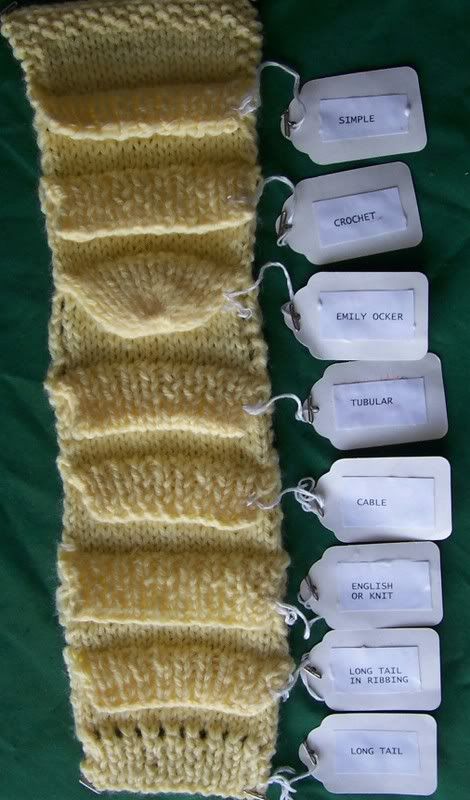I’ve been knitting for about 2 years now…self taught using books and this site. I’ve made all the beginner stuff: dish clothes, bibs, scarves, baby blankets. I’ve learned a few cast on methods, but am most comfortable with long tail. I’m wanting to attempt more advanced projects, and learn to read more complex patterns. I’m wondering how to know which cast on method to use. What are the advantages for long tail, knit on, and casting on off your thumb, etc.? Also, should I generally be slipping the first stitch in every row? I heard that somewhere, but when I try it it just doesn’t look as neat and even along the edge as when I just knit. Thanks.
Unless the pattern tells me to do like a provisional cast on or I’m knitting toe up socks…I don’t change and just use the knitted on…I think it lays pretty and is more stretchy…:teehee:
 now I’ve been told locally that this is wrong and I need to get over the knitted on…but it works for me
now I’ve been told locally that this is wrong and I need to get over the knitted on…but it works for me 
You might want to consider getting Stanley’s ‘Knitter’s Handbook.’ Excellent ref/technique book that breaks down COs/BOs, incs/decs, etc into categories, when to use them (pros/cons), how to do them, etc.
cam
I use longtail for most of my cast ons, only a few with knitted or cable. The thumb/backward loop CO is not very good for more than a few stitches; it makes a lot of slack in the yarn or big loops. Of Troy, the mistress of COs knows about 4 dozen, but admits to using the LT at least half the time, maybe more often.
Long-tail is all I know now. I have the CD with all of the videos from this site but there are so many things to learn. I’m overwhelmed right now.
you could make a cast on sampler.
cast on 20 to 30 stitches (cast on A)
then work an inch of ribbing, then an inch of stocking knit.
break yarn and put aside
cast on again (cast on B) same number of stitches
work an inch of ribbing.
then hold knitting A (front facing you ) and knitting B (front facing you, and knit them together (sort of like 3 needle bind off, but don’t bind off.
work an inch of stocking knit, break yarn, and set aside.
start again with cast on C…
same deal as with B,
then cast on D
don’t forget to make a chart (A= Long tail, B=twisted long tail, C= open/closed long tail, D=long tail in ribbing, E=. F=. an so on.
when you’re done, you’ll have something that looks like this–use it to compare and contrast cast ons…

This is a great blog for technical info, the name says it all:
I was reading her post on differnt types of casting on and their applicability yesterday. I love her take on provisional casting-on: